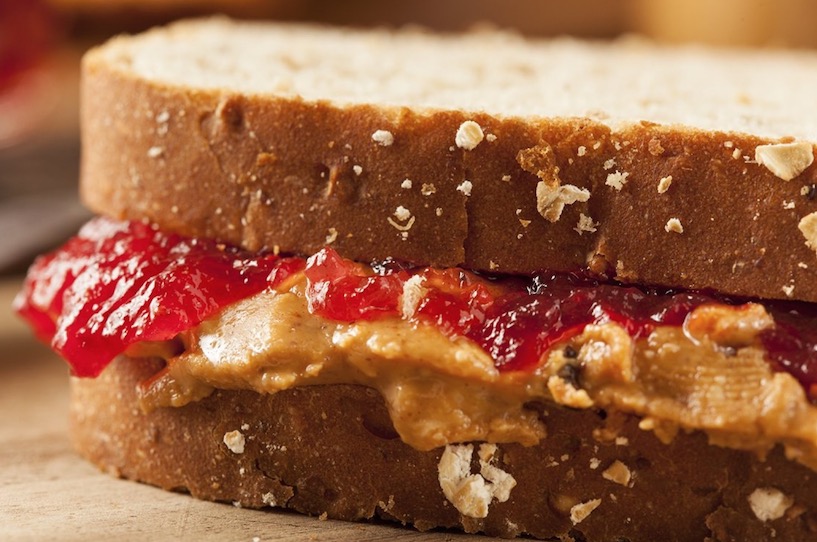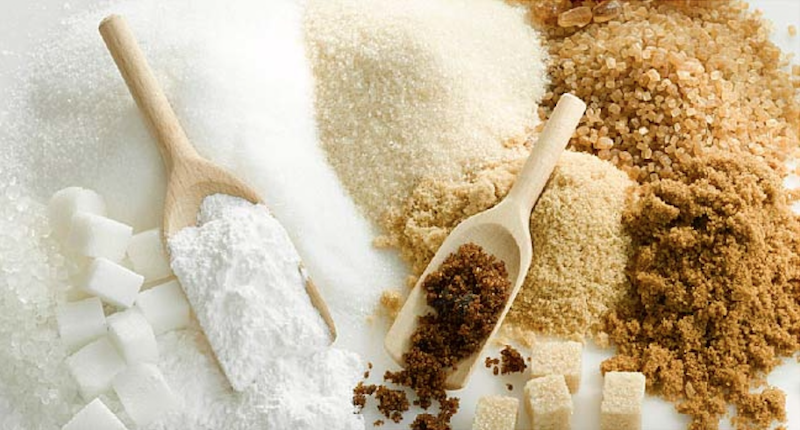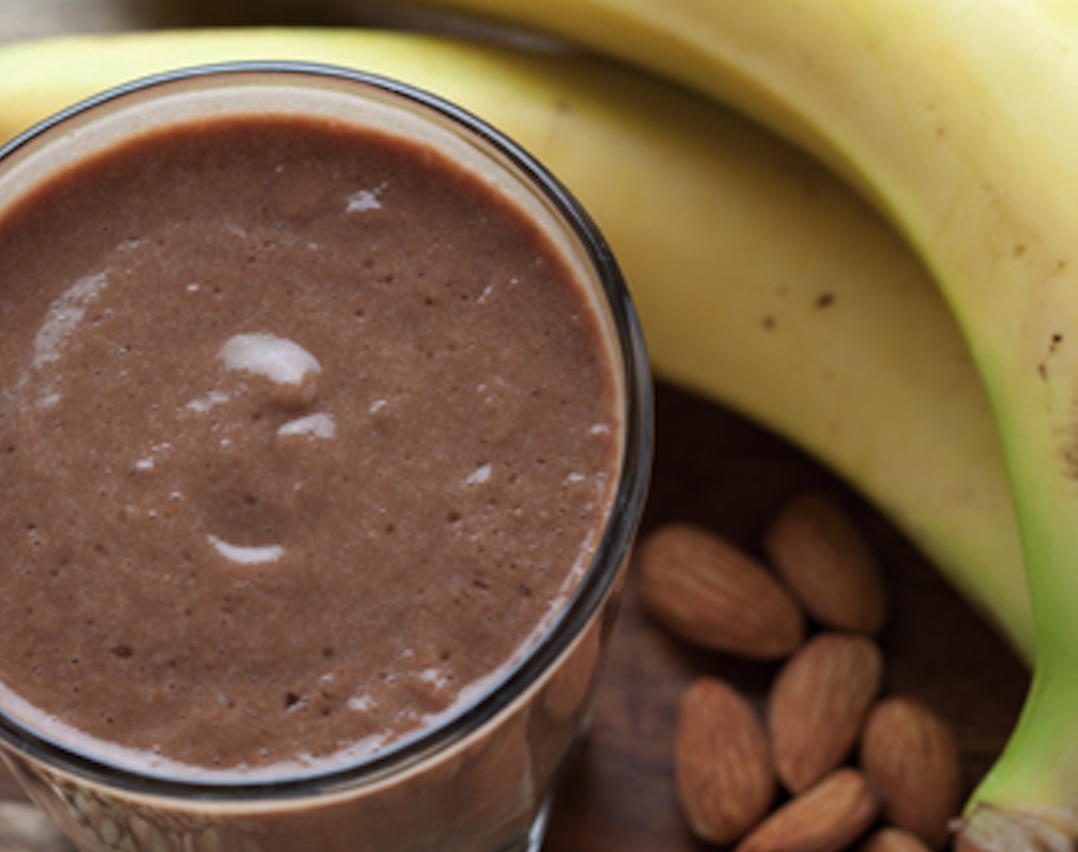The peanut butter and jelly sandwich is a quick and easy lunchtime staple loved by both kids and adults alike. Growing up, I absolutely hated this sandwich, as I was more of a grilled cheese kind of girl. But, as I got a little older and became more health conscious, I developed a real liking for peanut butter and, ultimately, embraced the beloved PB&J sandwich—I actually eat one at least twice a week!
This may sound a bit surprising since the PB&J sandwich isn’t generally classified as a “healthy” food. But, when prepared the right way, this signature sandwich can be a particularly valuable inclusion in almost any style of diet. So, whether you’re a devoted carnivore, vegetarian or vegan, here are a few simple tips for transforming one of America’s favorite sandwiches into an unbelievably wholesome treat.
Choose Your Peanut Butter Selectively and Wisely
Peanut butter, the core ingredient of the PB&J sandwich, is a naturally rich source of protein and healthy fats, fiber, and countless micronutrients including B-vitamins, phosphorus and antioxidants like vitamin E and copper. It’s important to understand, however, that not all peanut butter is created equal.
Related Article: Micronutrients: The Nutritional Building Blocks for Good Health
The market is flooded with highly processed versions housing large amounts of added sugar and artificial fats. While they are relatively cheap, it’s better to spend a little more on a higher quality peanut butter for your own health’s sake. The healthiest brands are minimally processed and all-natural with minimal ingredients and no added sugar.
Now, a PB&J sandwich isn’t necessarily a PB&J sandwich without the peanut butter. But, if you’re allergic to peanuts you’ll obviously have to switch things up. If this is the case, opt for natural nut butters derived from almonds, walnuts or cashews and maybe even try sunflower seed or pumpkin seed butters, as they are equally as nutritious.
Related Article: Good Fats Versus Bad Fats: What You Need to Know About Dietary Fat
I’m personally a huge fan of WOWBUTTER, a plant-based butter with a taste and texture that’s very similar to peanut butter. Unlike traditional nut butters, the amino acid composition of WOWBUTTER is more similar to that of meats, eggs and dairy foods, making it a higher quality protein source. It’s definitely a must try!
Create Natural Sweetness with High-Quality Spreads
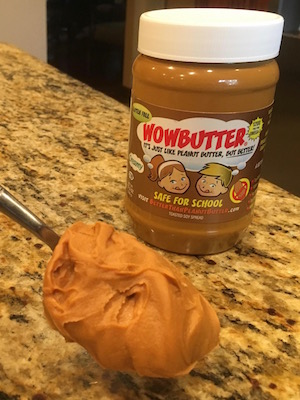 Although “jelly” is technically the second ingredient in a PB&J sandwich, you can also use jam or preserves. Regardless of the one you choose, they’re all generally made with fruit and fruit comes with a lot of sugar. And, regardless of whether the sugar comes from jelly, jam or preserves, regularly eating it in abundance can lead to adverse effects.
Although “jelly” is technically the second ingredient in a PB&J sandwich, you can also use jam or preserves. Regardless of the one you choose, they’re all generally made with fruit and fruit comes with a lot of sugar. And, regardless of whether the sugar comes from jelly, jam or preserves, regularly eating it in abundance can lead to adverse effects.
On average, a tablespoon of each contains about 2.5 teaspoons of added sugar, which is pretty significant. To reduce the amount of sugar you take in, look for reduced-sugar versions made from 100% fruit juice or whole fruit, as they typically contain about a teaspoon (or less) from only the naturally occurring fruit sugars.
Related Article: Dietary Sugar: The Good, The Bad and The Unnecessary
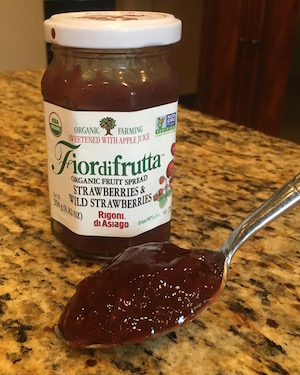 I was recently introduced to Fiordifrutta fruits spreads, which I really like. With only a mere three ingredients, these spreads are comprised solely of fruit sweetened with organic apple juice. That’s it! Due to this unique composition, Fiordifrutta spreads contain 30% fewer calories than most brands and are considerably lower in sugar.
I was recently introduced to Fiordifrutta fruits spreads, which I really like. With only a mere three ingredients, these spreads are comprised solely of fruit sweetened with organic apple juice. That’s it! Due to this unique composition, Fiordifrutta spreads contain 30% fewer calories than most brands and are considerably lower in sugar.
To add a whole lot of flavor to your PB&J sandwich, try Fiordifrutta’s raspberry, strawberry or wild blueberry blends. Another healthy option is to combine your peanut butter with fresh fruits like banana, apple or berries instead of jelly, jam or preserves. This is a great way to boost your intake of vitamins and minerals, antioxidants, and fiber.
Related Article: The Best Time to Eat Fruit
Select Breads Comprised of Real Whole Grains
Finally, you cant have a PB&J sandwich without bread, at least as far as I can tell. When choosing bread, whole grain varieties are best. Unfortunately, given today’s “anti-gluten” trend, many whole grain breads have been given a bad rap. But, unbeknownst to many, these breads are packed full of fiber and contain a host of valuable nutrients that support long-term weight management and overall good health.
Related Article: The Gluten-Free Lifestyle: Is It Really a Fad?
Now, I would be remiss if I didn’t warn that all whole grain breads are not the same! Many existing brands marketed as “whole grain” (100% wheat flour, cracked wheat, multigrain, fifteen grain, and twelve grain) are really refined and have been stripped of most essential nutrients. High-quality breads contain at least 16 grams of whole grains per serving.
Therefore, you should choose only those made from 100% whole grains, which include whole wheat and whole rye varieties.
Related Article: How to Lose Weight Without Cutting Carbs
As a good rule of thumb, go for only those brands that list a “whole” grain as the first ingredient.
I want to say one last little bit, specifically related to the importance of portion control. If your portion sizes aren’t intact, you can easily transform a “healthy” PB&J sandwich into an otherwise “unhealthy” one. For instance, a two-tablespoon serving of most nut butters houses approximately 190 calories while there are about 25-50 in a single tablespoon of jelly, jam or preserves (depending on the sugar content).
Related Article: Understanding Serving Size Values on Food Labels
Additionally, the calorie content in one serving of commercially prepared whole grain bread can range anywhere between 70 and 100 and one slice is generally considered a serving. Taken together, that’s about 355-440 calories in a carefully-portioned PB&J sandwich made with two slices of bread. Adding a little bit of anything can cause the sugar and overall calorie content of your sandwich to skyrocket.
To avoid this, ensure you’re carefully controlling your portions by adhering to recommended serving sizes. Personally, to keep my sugar levels and overall calorie counts in check, I generally make PB&J half sandwiches using only a single slice of bread. This is a great strategy for carb watchers and calorie counters alike.
And there you have it! Some super simple tips for transforming your PB&J sandwich into a deliciously, wholesome treat. The relative “healthiness” of your sandwich really does depend on the ingredients you use. By choosing the right types of ingredients and maintaining sensible portions you can greatly maximize the overall nutritional quality of this signature sandwich.

